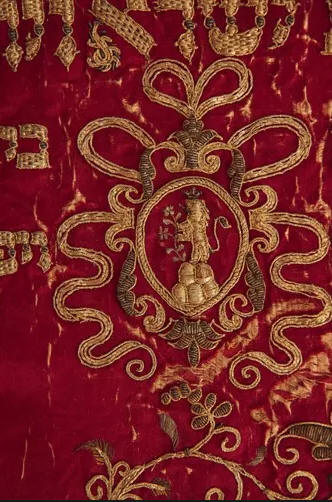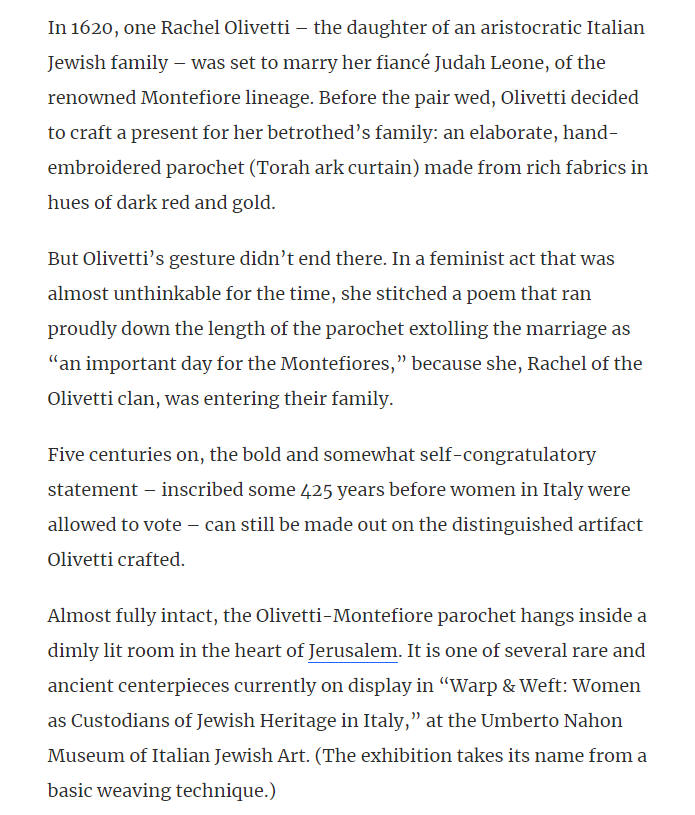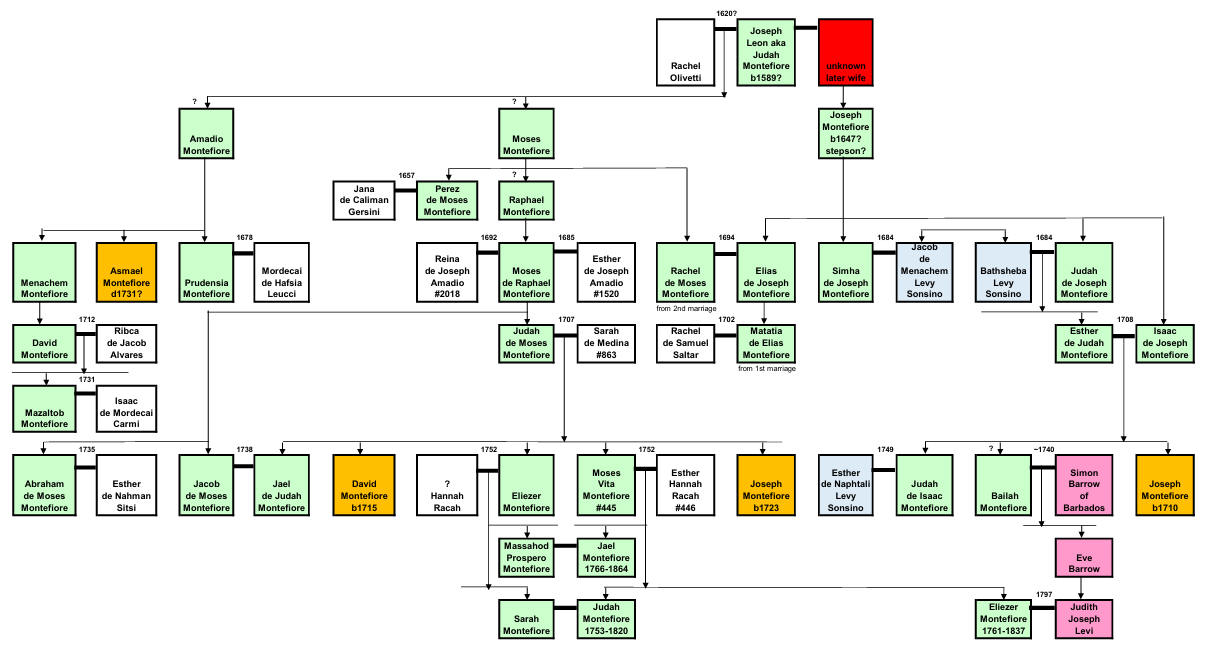

The early Montefiores of Livorno
The 2020 publication of ref 319 includes 15 Montefiore marriages (listed here) each with full date and name of both fathers. It has thus become possible to refine the family tree of the early Montefiores which appears in the literature (see here). In the above chart they add essential detail to the online accounts. The few unverified relics of the online accounts remaining in the chart above are shown in ochre (but see note 1 below).
Apart from the 15 newly published marriages, we show 4 marriages from other sources (see note 2 below). In addition 2 further marriages are proposed by us - the circa 1740 marriage of Bailah Montefiore & Simon Barrow, which (not appearing in ref 319) must have taken place away from Livorno (about the placement of Bailah Montefiore in the broader family and about Isaac Levy a brother-in-law of Simon Barrow of Barbados see note 3 below), and the 2nd marriage of Judah Montefiore in the top line (which we suggest is indicated by the awkward timing of Joseph's birth and the awkward conjunction of his name with that of his father for we suggest here that Judah Montefiore and Joseph Leon are the same person). Of course there is independent evidence for the Olivetti marriage in the top line of the chart (this evidence may be found in note 4 below).
Of interest are the 3 Levy Sonsino marriages (see note 3 below). The 2 Racah marriages point to the fact that the first given name of Eliezer's wife appears to have been dropped - the mother was named Hannah as we judge from the name of the wife of Moses Vita namely Esther Hannah which we read as Esther de Hannah. There appears to be 2 uncle/niece marriages of 1738 and 1708, and several cousin/cousin marriages (one in 1694, one in 1749, and two shown in the lowest 2 lines in the chart). There are 2 cases of a pair of siblings marrying a pair of siblings.
Notes:
1. The online data appeared to need correction in some cases. The 1708 marriage of Esther de Judah Montefiore, which was to her uncle Isaac de Joseph Montefiore, replaces her marriage in the online genealogy to Mach Vita de Joseph b1677. Esther's father Judah in the online genealogy is given as a son of Amadio, but we suggest this is incorrect for in ref 319 Judah was evidently a son of Joseph. Her husband is also (oddly) given in the online data as Israel Vita - thus in the above chart Isaac de Joseph replaces both Mach Vita and Israel Vita! We suggest that Menachem Montefiore is the Manuel Montefiore shown in online accounts. We note that the father-in-law of the 1685 and 1692 marriages of sisters ie Joseph Amadio shares a name with Amadio Montefiore but we have no other reason to suppose ref 319 omits a family name (ie we refrain from suggesting that Joseph Amadio was Joseph de Amadio Montefiore). The new marriages give no confirmation of the place of Amadio Montefiore. However with the help of the new data it is easy to suggest that Moses Montefiore the father of Rachel, fits very naturally into the genealogy as also the father of Raphael (thus removing the obvious error of Moses Raphael being shown online as the son of Joseph). The coincidence of the name Rachel provides our only evidence that Moses is the son of the 1620? marriage, though as it is likely that Rachel was born around 1680 and hence her father was over 50 when she was born, probably she was a daughter of her father's 2nd or later marriage. Her 1694 marriage to a cousin has perhaps the most dramatic effect of all the 15 newly published marriages - for apart from being (as just noted) our only connection with the 1620? marriage, it links what appear to be the 2 main branches of the Montefiores. Neither Rachel, nor her husband Elias, nor their 1694 marriage appear in the online genealogy!
2. The cousin/cousin marriages in the lowest lines of the chart were obtained from ref 50 Appendix B. The right-hand 1752 marriage was obtained from ref 6 p201. The 1797 marriage was found in our Barbados work, but as explained in note 3 the fact that in this marriage Judith Joseph Levi married a son of Moses Vita Montefiore does not mean Bailah Montefiore was a close relative of Moses Vita Montefiore (and possibly as we show in the chart she was rather more distantly related).
3. It seems Simon Barrow's brother-in-law Isaac Levi was Isaac Levy Sonsino, which makes it probable that Bailah Montefiore was in a family branch with a Levy Sonsino connection as shown above, rather than a sister of Moses Vita Montefiore. The Levy Sonsino family appeared in London with Naphtali being Gabay at Bevis Marks in 5507, as did Jacob in 5513. Jacob was probably Naphtali's son for in 1742 at Bevis Marks Jacob de Naphtali married Esther de Menachem - see BMR2 #662. However, this Naphtali is not the Naphtali most closely related to Isaac Levy Sonsino (as discussed here). The Levy Sonsinos are discussed in Vol 1 ref 319 pp184-93, which citing ref 64 reports that Naphtali and Jacob Levy Sonsino of London specialised in the diamond and coral trade, and we observe that they arrived in London about the same time as the Francos who were in the same business. The 3 Levy Sonsino marriages make us consider whether a natural parent of the earliest Joseph Montefiore was a Levy Sonsino (but there is no evidence at present one way or the other).
4. The 1620? marriage is oft-reported, albeit with varying dates, because of the strikingly embroidered parochet (Torah ark curtain) commemorating the marriage. We want to learn what the parochet can tell us about the date and place of the marriage, and where the groom came from and his father. The parochet is kept at the Umberto Nahon Museum for Italian Jewish Art in Jerusalem which gave us a high-resolution image as found here (9MB). An architectural motif contained in the parochet is discussed in ref 350. The parochet more recently appeared in the Museum's 'Warp and Weft' exhibition, the catalogue of which contains the following image:
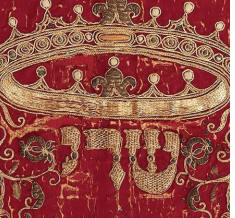
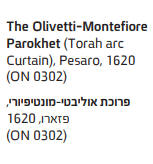
The further image below appears in a journal article on the 'Warp and Weft' exhibition which observes that the parochet includes a claim that the marriage was an important day for the Montefiores. It may well have been euphemistic and perhaps tongue-in-cheek to suggest it was the addition of Rachel herself to the family which was important, for there would have been a splendid dowry! The lion obviously refers to the name Judah, while the mountain and the flower obviously refer to the Montefiore name. The article is referred to below.
